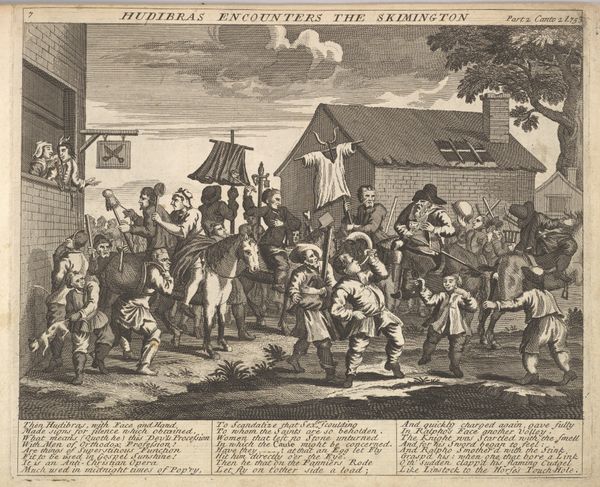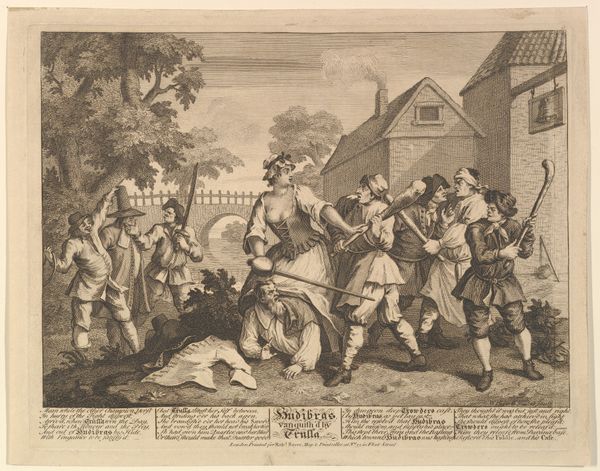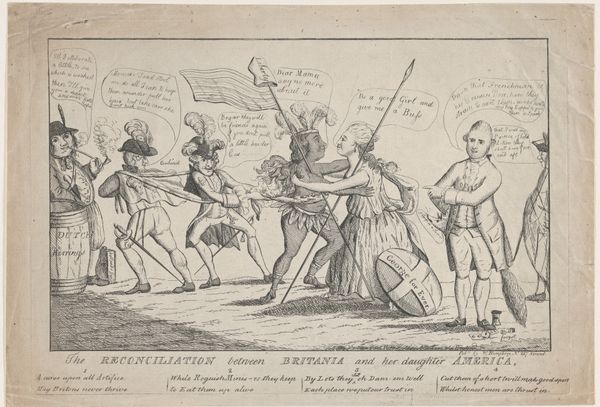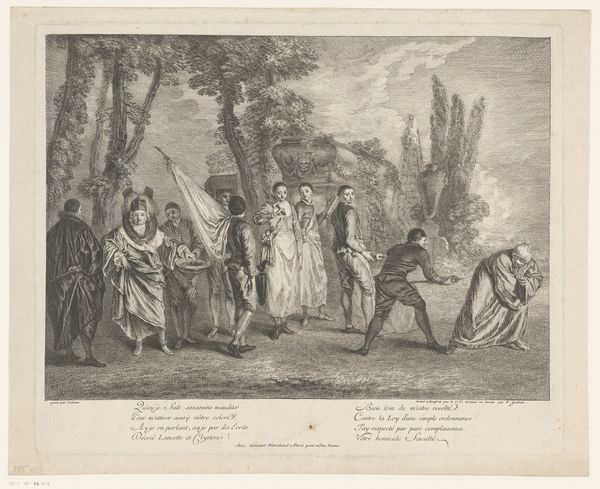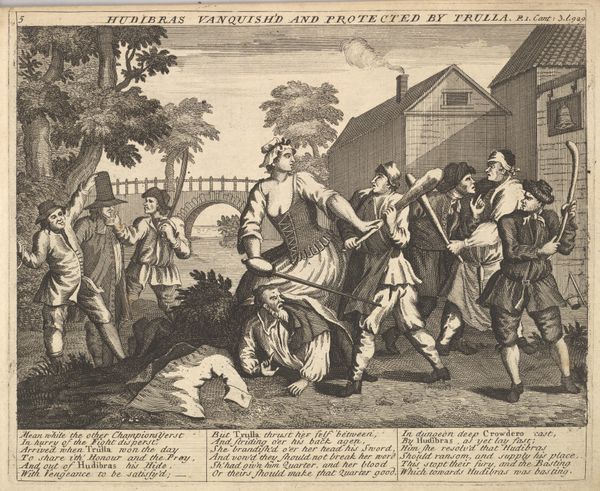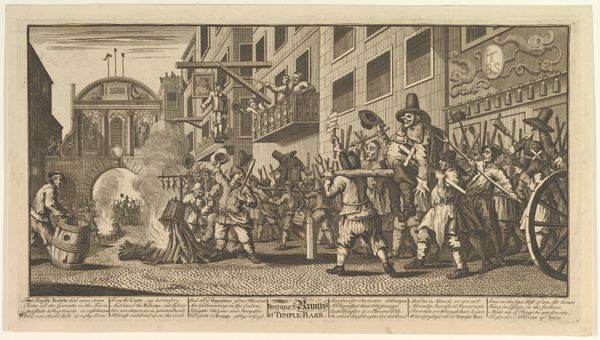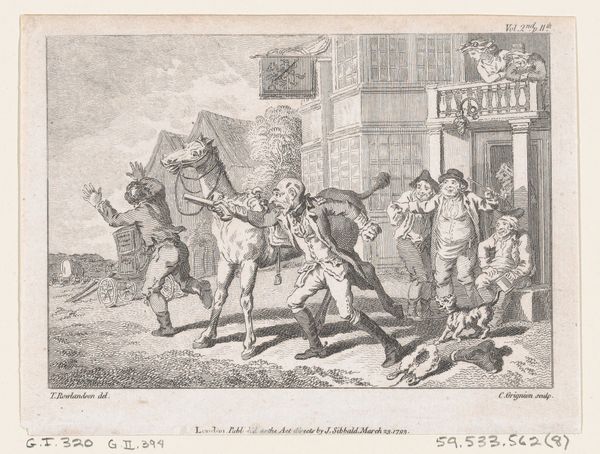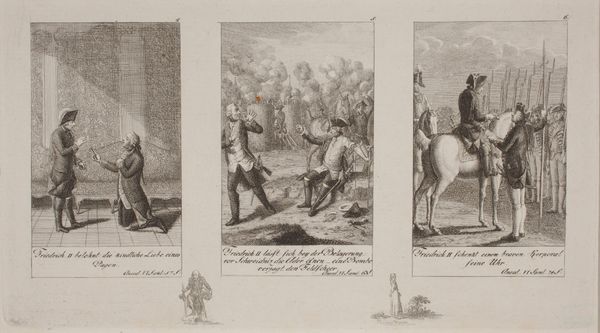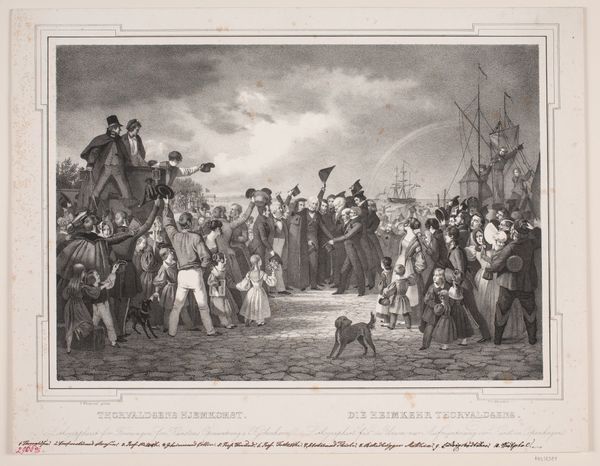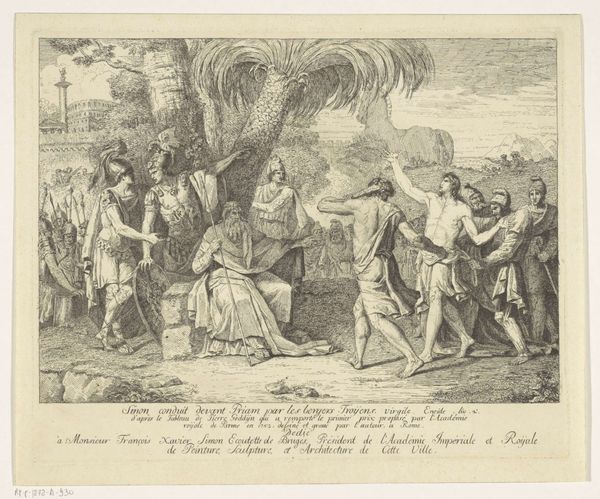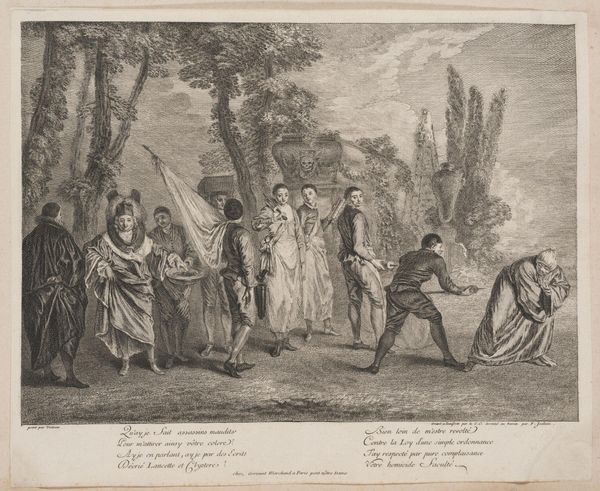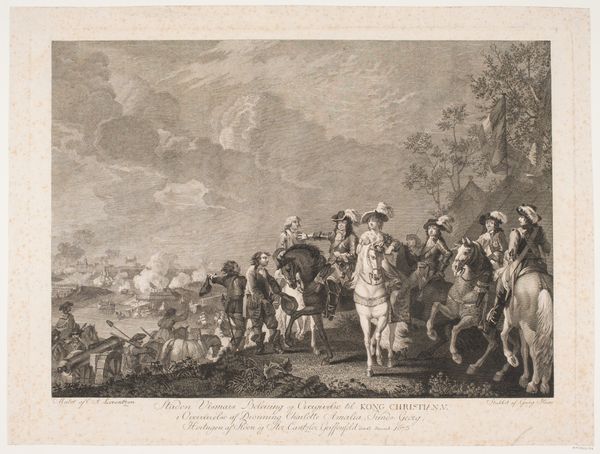
The Adventure of the Bear and the Fiddle (Plate 3: Illustrations to Samuel Butler's Hudibras) 1725 - 1730
0:00
0:00
drawing, print, engraving
#
drawing
#
weapon
#
baroque
# print
#
caricature
#
landscape
#
figuration
#
horse
#
men
#
line
#
genre-painting
#
history-painting
#
engraving
Dimensions: Plate: 7 11/16 x 9 7/16 in. (19.5 x 23.9 cm) Sheet: 8 1/8 x 10 15/16 in. (20.7 x 27.8 cm)
Copyright: Public Domain
Editor: This is William Hogarth’s "The Adventure of the Bear and Fiddle," from around 1725-1730. It’s a print, currently at the Met. I'm struck by the satirical feel, almost cartoonish in its depiction of the figures and their exaggerated expressions. How do you interpret this work, given the context of the time? Curator: This piece offers a powerful lens through which to examine the social and political currents of 18th-century England. Hogarth was deeply invested in critiquing the moral and social landscape. Considering the scene, and knowing Hogarth, it's essential to understand what societal norms he might be skewering. Who do you think the targets of his satire might be in this image, and why? Editor: Well, the figures seem like caricatures of the wealthy and powerful. The knight on horseback, for example, appears pompous and self-important, contrasted with the…less refined individuals surrounding him. Curator: Precisely. Hogarth used his art to expose the hypocrisy and corruption he saw rampant in the upper classes. Consider also the role of spectacle and public performance. This isn't simply about ridiculing individuals; it's about highlighting the ways power is constructed and maintained through social rituals, through staged displays of authority that ultimately lack substance. How does this relate to contemporary political theatre, for instance? Editor: That's a great point. The composition feels very staged, almost like a theatrical production. So the "adventure" isn’t just a story, it’s a commentary on how narratives are constructed to reinforce power? Curator: Exactly. And consider the role of the bear and the fiddle—symbols of wildness and artistic expression tamed and contained within the confines of social order. This work invites us to question whose stories are told, and whose voices are silenced in the construction of dominant narratives. Editor: It’s fascinating to see how Hogarth uses humor to engage with such complex issues of class and power. It makes me rethink how satire can be a powerful tool for social commentary, even today. Curator: Indeed. Hogarth challenges us to be critical viewers of the world around us, recognizing the ways in which power operates and the voices that are marginalized. This work serves as a potent reminder of the enduring relevance of art in social and political discourse.
Comments
No comments
Be the first to comment and join the conversation on the ultimate creative platform.
